 April 11, 2019 John E. Ross, KD8IDJ, Editor
| ||||||
World Amateur Radio Day 2019 Marks International Amateur Radio Union Founding Thursday, April 18, is World Amateur Radio Day (WARD), this year marking the 94th anniversary of the International Amateur Radio Union (IARU), which was founded in Paris in 1925. Each year, WARD celebrates Amateur Radio's contribution to society. Groups in the US and around the world will celebrate WARD 2019 with on-air activities.
Amateur Radio experimenters were the first to discover that the shortwave spectrum was not the wasteland experts of the time considered it to be, but a resource that could support worldwide propagation. In the rush to use these shorter wavelengths, Amateur Radio was "in grave danger of being pushed aside," the IARU's history notes. Amateur Radio pioneers met in Paris in 1925 and created the IARU to support Amateur Radio around the globe. Two years later, at the International Radiotelegraph Conference, Amateur Radio gained allocations still recognized today -- 160, 80, 40, 20, and 10 meters. More bands have followed, and the IARU has been From the 25 countries that formed the IARU in 1925, the IARU has grown to include 160 member-societies in three regions. IARU Region 1 includes Europe, Africa, the Middle East, and northern Asia. Region 2 covers the Americas, and Region 3 is comprised of Australia, New Zealand, the Pacific island nations, and most of Asia. The International Telecommunication Union (ITU) has recognized the IARU as representing the interests of Amateur Radio. Groups are encouraged to promote their WARD activity on social media by using the hashtag #WorldAmateurRadioDay on Twitter, Instagram, and Facebook. Visit the IARU World Amateur Radio Day web page for a listing of on-the-air activities. Solar Cycle 25 Predicted to be Similar to Cycle 24 Scientists predicting the sun's activity for Solar Cycle 25 say it's likely to be much like that of current Cycle 24, which is declining and predicted to bottom out in 2019 or 2020. Solar Cycle 25 Prediction Panel experts said Solar Cycle 25 may get off to a slow start, but is anticipated to peak between 2023 and 2026 with a sunspot range of 95 to 130. This is well below the typical average of 140 to 220 sunspots per solar cycle. The panel expressed high confidence that the coming cycle should break the trend of weakening solar activity seen over the past four cycles. The Solar Cycle Prediction Panel forecasts the
number of sunspots expected for solar maximum, along with the timing of the peak and minimum solar activity levels for the cycle. The outlook was presented on April 5 at the 2019 NOAA Space Weather Workshop in Boulder, Colorado. "We expect Solar Cycle 25 will be very similar to cycle 24: Another fairly weak cycle, preceded by a long, deep minimum," said panel co-chair Lisa Upton, a solar physicist with Space Systems Research Corp. "The expectation that Cycle 25 will be comparable in size to Cycle 24 means that the steady decline in solar cycle amplitude, seen from cycles 21 - 24, has come to an end and that there is no indication that we are currently approaching a Maunder-type minimum in solar activity." The solar cycle prediction gives a rough idea of the frequency of space weather storms of all types, from radio blackouts to geomagnetic storms and solar radiation storms. In addition to its effects on Amateur Radio signal propagation, space weather can affect power grids; critical military, airline, and shipping communications; satellites and GPS signals, and can even threaten astronauts through exposure to harmful radiation. Solar Cycle 24 reached its maximum in April 2014, with a peak average of 82 sunspots. The sun's northern hemisphere led the sunspot cycle, peaking more than 2 years ahead of the southern hemisphere For Solar Cycle 25, the panel hopes for the first time to predict the presence, amplitude, and timing of any differences between the northern and southern hemispheres on the sun, known as hemispheric asymmetry. Later this year, the panel will release an official sunspot number curve showing the predicted number of sunspots during any given year and any expected asymmetry. The panel will also look into the possibility of providing a solar flare probability forecast. "While we are not predicting a particularly active Solar Cycle 25, violent eruptions from the sun can occur at any time," said Doug Biesecker, panel co-chair and a solar physicist at NOAA's Space Weather Prediction Center (SWPC). Visit the SWPC to obtain the latest space weather forecast. Read more. -- Thanks to NOAA MIT Requests FCC Rules Waiver for Medical Monitoring Device The Massachusetts Institute of Technology (MIT) is seeking a waiver of some Part 15 rules in order to obtain FCC certification of its WiTrack System, a swept-frequency ultra-wide band (UWB) indoor medical monitoring device. According to MIT, the WiTrack System uses an indoor swept signal of up to 2.5 GHz in the 6 - 8.5 GHz band to passively monitor mobility, breathing, and other physiological signals in patients and senior adults. Because the system would transmit an RF signal and receive its reflection from the environment, it would not require the use of body-worn sensors. MIT has indicated that different According to MIT publicity material, WiTrack tracks the 3D motion of a user from the radio signals reflected off a person's body. It works even if the person is occluded from the WiTrack device or in a different room. WiTrack does not require the user to carry any wireless device. "WiTrack localizes the center of a human body to within 10 to 13 centimeters in the x and y dimensions (about the size of an adult hand), and 21 centimeters in the z dimension. It also provides coarse tracking of body parts, identifying the direction of a pointing hand with a median of 11.2 degrees. It can also detect falls with 96.9% accuracy. WiTrack can be incorporated into consumer electronics and has a wide set of applications," MIT says.
The waiver request has been folded into ET Docket 19-89, and interested parties have until April 18 to comment and until May 3 to file reply comments. The K7RA Solar Update Tad Cook, K7RA, Seattle, reports: The first 3 days of the reporting week (Thursday through Saturday) had no visible sunspots, but sunspots returned Sunday through Wednesday. The average daily sunspot number declined from 9.4 to 6.9, but average daily solar flux rose from 69.5 to 75.4. Geomagnetic indicators were slightly more active, with the average daily planetary A index increasing from 8.4 to 10.6, and average middle latitude A index increasing from 7.3 to 9.
The predicted planetary A index is 14, 12, and 8 on April 11 - 13; 5 on April 14 - 23; 10, 8, 5, 10, 8, and 5 on April 24 - 29; 10 on April 30 - May 2; 7 on May 3; 5 on May 4 - 20, and 10, 8, 5, 10, and 8 on May 21 - 25. Sunspot group 2738 appeared on April 7. It's the bright spot on this STEREO spacecraft image. This view will move from left to right over time, until it disappears off the right side. Sunspot numbers for April 4 - 10 were 0, 0, 0, 11, 12, 12, and 13, with a mean of 6.9. The 10.7-centimeter flux was 70.3, 71.7, 73.6, 76.5, 78.6, 79, and 78.1, with a mean of 75.4. Estimated planetary A indices were 10, 14, 7, 5, 13, 11, and 14, with a mean of 10.6. Middle latitude A index was 8, 10, 7, 5, 12, 11, and 10, with a mean of 9. A comprehensive K7RA Solar Update is posted Fridays on the ARRL website. For more information concerning radio propagation, visit the ARRL Technical Information Service, read "What the Numbers Mean...," and check out K9LA's Propagation Page. A propagation bulletin archive is available. Monthly charts offer propagation projections between the US and a dozen DX locations. Share your reports and observations. Just Ahead in Radiosport
See the ARRL Contest Calendar for more information. For in-depth reporting on Amateur Radio contesting, subscribe to The ARRL Contest Update via your ARRL member profile email preferences. The Doctor Will See You Now! "Listening Outside the Ham Bands" is the topic of the new (April 11) episode of the "ARRL The Doctor is In" podcast. Listen...and learn!
Every 2 weeks, your host, QST Editor-in-Chief Steve Ford, WB8IMY, and the Doctor himself, Joel Hallas, W1ZR, will discuss a broad range of technical topics. You can also email your questions to doctor@arrl.org, and the Doctor may answer them in a future podcast. Enjoy "ARRL The Doctor is In" on Apple iTunes, or by using your iPhone or iPad podcast app (just search for "ARRL The Doctor is In"). You can also listen online at Blubrry, or at Stitcher (free registration required, or browse the site as a guest) and through the free Stitcher app for iOS, Kindle, or Android devices. If you've never listened to a podcast before, download our beginner's guide. AMSAT, ARRL Comment in FCC Orbital Debris Mitigation Proceeding AMSAT has told the FCC that several proposed rule changes related to the mitigation of orbital debris would have an extremely detrimental effect on both the Amateur Satellite Service and AMSAT's ability to launch and operate new satellites, including AMSAT's upcoming GOLF satellites. AMSAT filed comments on April 5 on an FCC Notice of Proposed Rule Making in IB Docket 18-313. AMSAT argues that amateur satellites often have longer mission lifespans than other small satellites and that the FCC should take a mission duration of 5 to 10 years into account when determining whether or not an amateur satellite will meet the orbital debris regulations, either by transferring to a parking orbit or re-entering the atmosphere within 25 years of mission completion. Current practice is to assume a "zero-year" mission and to require that amateur satellites meet the debris regulations.
Additionally, AMSAT noted that current plans for the GOLF-1 satellite are to meet orbital debris mitigation guidelines through atmospheric re-entry by deploying a drag device that will ensure re-entry within 25 years, despite deployment at an altitude higher than 1,000 kilometers. This proposed rule would prohibit GOLF-1's deployment at that altitude. The Commission's proposed rules would further require that Amateur Satellite licensees indemnify the government against any claims made against the US due to the operation of a satellite. AMSAT believes this proposal would end the ability of AMSAT, or any other entity in the US, to launch and operate amateur satellites and urged the FCC to consider alternatives.
In this regard, ARRL supports AMSAT's positions, which suggest that "the nature of the modifications needed [should] achieve the Commission's expressed regulatory objectives without needlessly impairing the Amateur Satellite service." ARRL said the FCC should exempt amateur satellites or otherwise ameliorate its proposed indemnification requirement and said that only telemetry "used to command onboard propulsion systems" should be subject to encryption. ARRL also said amateur satellites proposed for disposal by atmospheric re-entry should not be restricted to orbital altitudes of 650 kilometers or lower, and that the longer duration of amateur satellite missions should be factored into the time required for a satellite to naturally de-orbit or be transferred to "a parking orbit." Interested parties may file reply comments by May 5 via the FCC Electronic Comment Filing Service (ECFS). Read more. -- Thanks to AMSAT News Service ARRL Seeks Contest Program Manager ARRL is inviting qualified candidates to apply for the position of Contest Program Manager. This is a permanent, full-time position at ARRL Headquarters in Newington, Connecticut. The Contest Program Manager is responsible for all aspects of ARRL's Contest Program, including receipt and processing of entries, quality of results, awards fulfillment, public outreach, program development and promotion, and volunteer coordination and management. Job duties include:
Applicants should have at least 5 years of experience managing personnel and/or volunteers, software, and processes, plus a minimum of 5 years of active participation in Amateur Radio contesting. For more information on how to apply, visit the ARRL Employment Opportunities web page. Read more. Florida ARES, State of Florida Considering Memorandum of Understanding Amateur Radio Emergency Services (ARES®) Section Emergency Coordinators (SEC) from the ARRL Northern, West Central, and Southern Florida sections met recently with state Emergency Management Communication leaders to discuss improved integration of Amateur Radio during emergencies. A draft Memorandum of Understanding (MOU) between ARES and the State of Florida was presented for further consideration.
If agreed upon, the MOU would make ARES and Amateur Radio a valid resource that can be easily requested during an incident. "For the first time ARES will be integrated into the state communication team," said West Central Florida Section Emergency Coordinator (SEC) Ben Henley, KI4IGX. To facilitate deployment of communication resources more effectively, the three Sections have previously agreed to work as a single entity during an incident. Also discussed was the necessity of changing the way ARES volunteers are credentialed, trained, and deployed. "This is a team effort," said Northern Florida SEC Karl Martin, KG4HBN. SECs and state leaders anticipate working together in the future to overcome shortcomings in disaster and emergency preparation to ensure an effective response when Amateur Radio support is requested. FCC Agrees to 90-Day Pause in Consideration of WT Docket 16-239 It has been almost 6 years since the ARRL requested the FCC to consider changes to the Amateur Radio digital rules in 11-708 and almost 3years since ARRL filed comments in the resultant proceeding, identified by the FCC as 16-239.
Since ARRL's initial filing, many individuals and groups have commented to the FCC and publicly regarding issues and potential consequences they passionately believe are implicated by the FCC's proposals embodied in 16-239/11-708. Additionally, in the six years since the initial filing of 11-708, new information has been presented by individuals and groups who support and oppose the FCC's proposed adoption of 16-239. Due to the time that has elapsed since ARRL's initial digital rules change request, the new information that has become available and the extent of both support and opposition to the proposed rules change, ARRL asked the FCC to grant a delay in its consideration of the proposed rules change to provide the League the opportunity to clarify the issues and determine whether a consensus can be reached on some or all of the issues raised by the FCC's proceeding. At ARRL's request, the FCC Staff has agreed to a 90-day pause in the consideration of WT Docket 16-239. In Brief...
â¦â¦â¦
â¦â¦â¦
â¦â¦â¦
Upcoming ARRL Section, State, and Division Conventions
Find conventions and hamfests in your area. See the ARRL Contest Calendar for more information. For in-depth reporting on Amateur Radio contesting, subscribe to The ARRL Contest Update via your ARRL member profile email preferences.
. .
Subscribe to...
Free of charge to ARRL members...
| ||||||
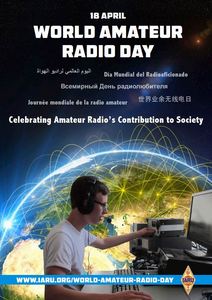 "I am pleased to extend my greetings for World Amateur Radio Day," IARU President Tim Ellam, VE6SH, said. April 18 is the day for all of Amateur Radio to celebrate and tell the world about the science we can help to teach, the community service we can provide, and the fun we have. I would encourage all radio amateurs to join in the celebrations and promote Amateur Radio on the air or in your community."
"I am pleased to extend my greetings for World Amateur Radio Day," IARU President Tim Ellam, VE6SH, said. April 18 is the day for all of Amateur Radio to celebrate and tell the world about the science we can help to teach, the community service we can provide, and the fun we have. I would encourage all radio amateurs to join in the celebrations and promote Amateur Radio on the air or in your community."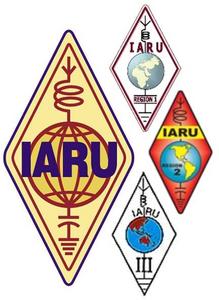 working to defend and expand Amateur Radio frequency allocations ever since.
working to defend and expand Amateur Radio frequency allocations ever since..png)
 sunspot peak. Given that the sun takes 11 years to complete one solar cycle, this is only the fourth time that US scientists have issued a solar cycle prediction. The first panel convened in 1989 for cycle 22.
sunspot peak. Given that the sun takes 11 years to complete one solar cycle, this is only the fourth time that US scientists have issued a solar cycle prediction. The first panel convened in 1989 for cycle 22..jpg) versions of the devices would sweep slightly different frequencies within the 6 - 8.5 GHz range.
versions of the devices would sweep slightly different frequencies within the 6 - 8.5 GHz range.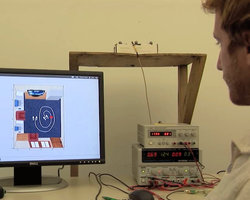 Section 15.503(d) of the FCC's rules defines a UWB transmitter as an intentional radiator that, at any point in time, has a fractional bandwidth equal to or greater than 0.20 or has a UWB bandwidth equal to or greater than 500 MHz, regardless of the fractional bandwidth. The WiTrack System would not satisfy this definition, because each frequency step is less than 500 MHz in bandwidth "at any point in time," MIT says, even though the total bandwidth needed for optimal performance exceeds 500 MHz. MIT states that the waiver it seeks is similar to those previously granted by the Commission, and that grant of a waiver for the WiTrack System would be in the public interest.
Section 15.503(d) of the FCC's rules defines a UWB transmitter as an intentional radiator that, at any point in time, has a fractional bandwidth equal to or greater than 0.20 or has a UWB bandwidth equal to or greater than 500 MHz, regardless of the fractional bandwidth. The WiTrack System would not satisfy this definition, because each frequency step is less than 500 MHz in bandwidth "at any point in time," MIT says, even though the total bandwidth needed for optimal performance exceeds 500 MHz. MIT states that the waiver it seeks is similar to those previously granted by the Commission, and that grant of a waiver for the WiTrack System would be in the public interest.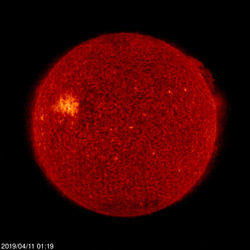 Predicted solar flux for the next 45 days is 78 on April 11 - 17; 76 and 74 on April 18 - 19; 70 on April 20 - 22; 69 on April 23; 70 on April 24 - 28; 71 on April 29 - May 1; 72 on May 2 - 3; 77 on May 4 - 6; 74 on May 7 - 16; 70 on May 17 - 19; 69, 68, 69, and 69 on May 20 - 23, and 70 on May 24 - 25.
Predicted solar flux for the next 45 days is 78 on April 11 - 17; 76 and 74 on April 18 - 19; 70 on April 20 - 22; 69 on April 23; 70 on April 24 - 28; 71 on April 29 - May 1; 72 on May 2 - 3; 77 on May 4 - 6; 74 on May 7 - 16; 70 on May 17 - 19; 69, 68, 69, and 69 on May 20 - 23, and 70 on May 24 - 25. Sponsored by
Sponsored by 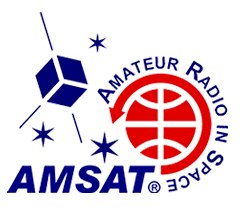 AMSAT also urged the Commission to consider alternatives to a proposed rule that would restrict to altitudes of 650 kilometers or less satellites in low-Earth orbit that plan to meet the orbital debris mitigation guidelines through atmospheric re-entry. AMSAT noted that, had this rule been in place, it would not have been permissible to deploy AO-85 and AO-91 in their current elliptical orbits with apogees of approximately 800 kilometers, even though both will re-enter within 25 years due to their low perigees.
AMSAT also urged the Commission to consider alternatives to a proposed rule that would restrict to altitudes of 650 kilometers or less satellites in low-Earth orbit that plan to meet the orbital debris mitigation guidelines through atmospheric re-entry. AMSAT noted that, had this rule been in place, it would not have been permissible to deploy AO-85 and AO-91 in their current elliptical orbits with apogees of approximately 800 kilometers, even though both will re-enter within 25 years due to their low perigees..jpg) In
In 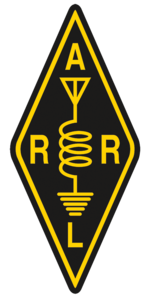 Promoting the ARRL contesting program in print, on the web, and in person.
Promoting the ARRL contesting program in print, on the web, and in person.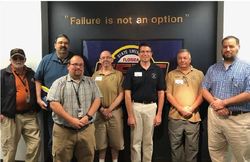
.jpg) The Commission's proposed changes differed from the ARRL's initial filing and caused ARRL to be concerned about possible interference to current users resulting from the deletion of ARRL's requested 2.8 MHz bandwidth limitation. Due to those concerns, ARRL filed comments with the FCC opposing the deletion of the requested bandwidth.
The Commission's proposed changes differed from the ARRL's initial filing and caused ARRL to be concerned about possible interference to current users resulting from the deletion of ARRL's requested 2.8 MHz bandwidth limitation. Due to those concerns, ARRL filed comments with the FCC opposing the deletion of the requested bandwidth..jpg) ARISS-Russia is planning to transmit more slow-scan television (SSTV) images from the International Space Station. Transmissions will begin on April 11 at approximately 1800 UTC and run continuously until approximately 1800 UTC on April 14, 2019. The transmissions will be on 145.800 MHz using PD-120 SSTV mode. All are invited to
ARISS-Russia is planning to transmit more slow-scan television (SSTV) images from the International Space Station. Transmissions will begin on April 11 at approximately 1800 UTC and run continuously until approximately 1800 UTC on April 14, 2019. The transmissions will be on 145.800 MHz using PD-120 SSTV mode. All are invited to 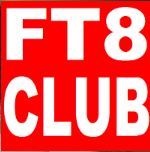 The European FT8 Club is sponsoring an
The European FT8 Club is sponsoring an  AMSAT-India has successfully launched an APRS satellite. The Automatic Packet Reporting System (APRS) payload on
AMSAT-India has successfully launched an APRS satellite. The Automatic Packet Reporting System (APRS) payload on 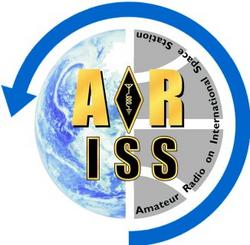 Bidding in the Out of This World ARISS Auction wraps up on April 14 at 2200 UTC. A new
Bidding in the Out of This World ARISS Auction wraps up on April 14 at 2200 UTC. A new 







